
Garden Hill First Nation Creates a Farm in a Box!
Food security is a significant issue for many remote First Nations across Canada — including Garden Hill First Nation, located in northern Manitoba. In the following blogpost from Aki Energy, a non-profit Aboriginal social enterprise that works with First Nations to start green businesses in their communities, creating local jobs and growing strong local economies, the process that led to Garden Hill’s Meechim Farm, is described.
It’s been a while, but we’ve been busy!
We’ve been working hard with the community of Garden Hill First Nation to launch Meechim Farm, a community-owned and-run operation that’s raising chickens, turkeys, and growing a wide range of fruit and vegetables. The farm is creating jobs within the community, and serves as a place to gather and learn about growing and raising food.
This is a big thing for the community. The only food option is a Northern Store, which is located across the lake from the community. This means people need to take a ferry — which charges per person, each way — to get groceries, which are overpriced and often unhealthy. Yes, pop is cheaper than milk. The farm is a step towards food sovereignty and a healthy community.

Starting a farm is no small feat, even in the easiest of conditions. Garden Hill First Nation is a fly-in community in northern Manitoba. Trying to figure out a cost effective way to bring everything we needed to build a barn to protect young chickens, and store all the supplies we’d need for the farm to successfully operate were huge challenges.
In the end, we designed a farm-in-a-box.
It was a simple concept: We would use shipping containers to transport our equipment up north on the winter roads, and then use those containers as the core structure of the farm buildings.
The journey from shipping container to functioning farm started back when there was still snow on the ground, and summer seemed like something that would never happen.
In February we packed two shipping containers full of farm equipment: a tractor, an electric buggy, chicken pluckers, irrigation supplies, and building materials. We trucked the shipping containers up to Garden Hill First Nation on the winter ice road, which is only open during the coldest months of winter. Aki Energy’s intrepid partner and experienced farmer Robert Guilford and Lenny, a filmmaker from the University of Winnipeg made the trip up north, keeping the shipping containers company.

The good thing about shipping containers is that they’re weatherproof and secure. They sat out the winter at the future farm site, keeping all our equipment warm and dry until spring. When the farm team arrived to unpack the trailers, everything was waiting for us just as we left it.
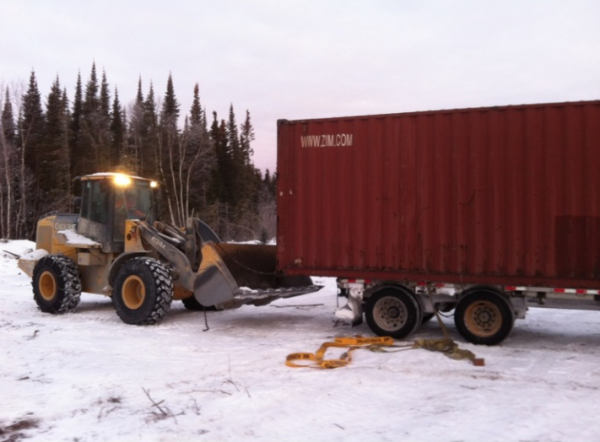
Once we unpacked the containers and organized our equipment, we set to work building the farm building.
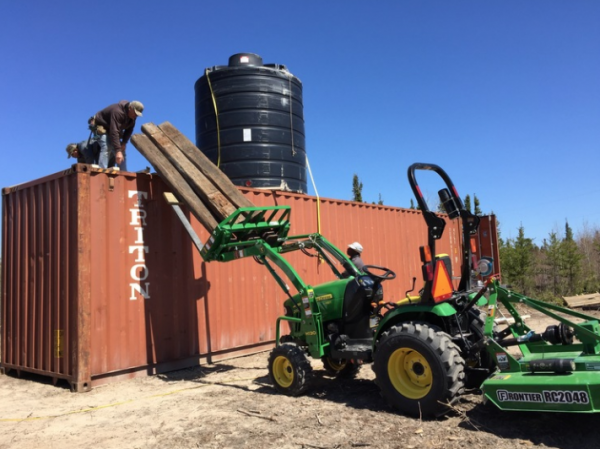
The first thing we installed was the gravity fed irrigation/water system. That big black tank on top of the container is filled with water from the nearby lake. The water is then gravity fed into an irrigation system for crops, and an automatic watering system for the chickens. Simple is always better!
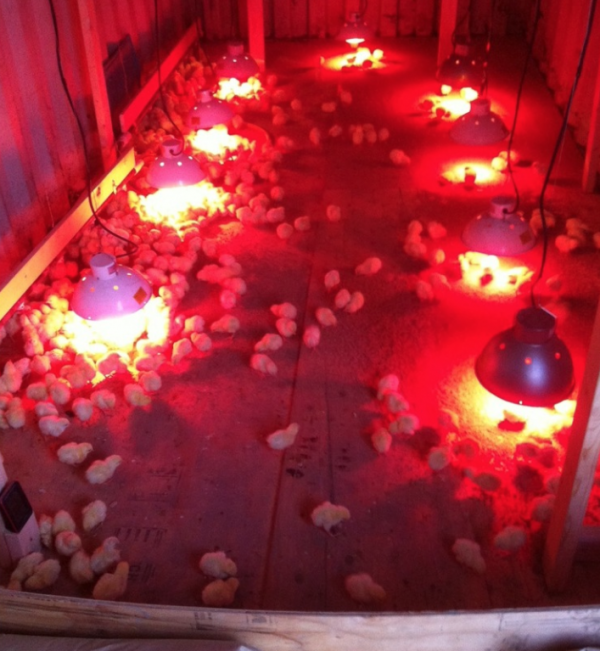
Inside the shipping container, we built a chicken brooder. Little chicks are extremely vulnerable to cold and need to be protected. Thankfully, the shipping container was a great brooder, and provided a safe, temperature controlled environment. We added ventilation, an automatic watering system, and farm staff feed and check on the chicks three times daily.
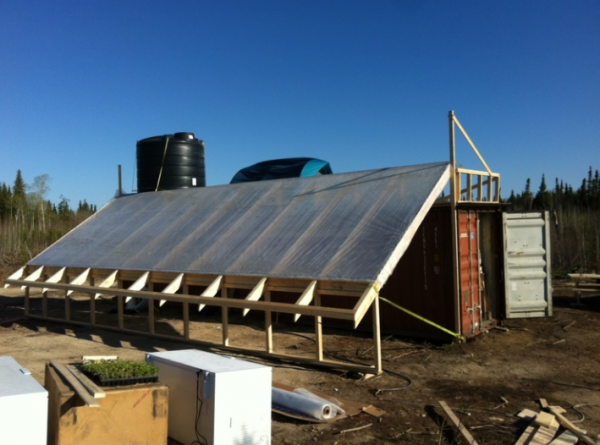
Next, we built a dual use greenhouse/chicken run off the south side of the shipping container. Plants were started on raised planter beds, taking advantage of the warmer temperatures provided by the greenhouse. Under the beds we built a small chicken run, to give the young birds some access to air and sunlight before they were ready to move outside into the outdoor runs.

On the north side of the building, there’s an outdoor kitchen and chicken processing facility, which will be complete by the time we slaughter and process the first batch of birds in a few weeks. On the top of the trailer, we built the ‘penthouse suite,’ a small living quarters for overnight stays.
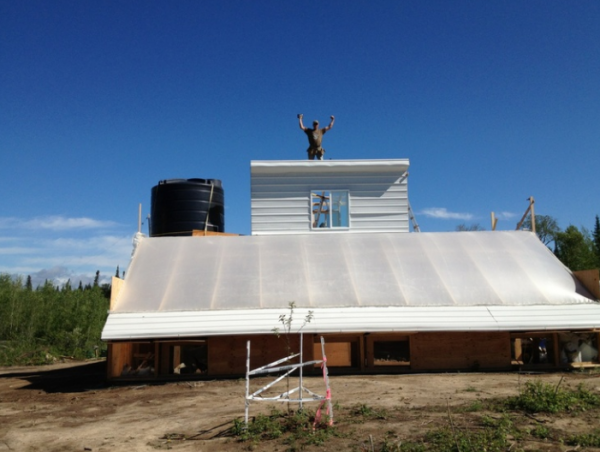
At the end of the farm season, valuable equipment can be re-loaded into the shipping container at the centre of the farm building and stored safely until the next season.
At it’s core, the building is safe from the elements, fire, theft, and animals. The farm-in-a-box has proven to be the innovation that has made the Meechim Farm possible.
Best of all? The farm-in-a-box is modular and can be easily replicated on future projects! It’s affordable, practical and effective. We believe that the farm-in-a-box is a model that can work in other northern First Nations facing similar healthy food challenges as Garden Hill First Nation.
The following video, The Meechim Project, follows the story of Garden Hill First Nation and its journey to build a self-sustaining farm for a northern Manitoba community that is only accessible via air and ice roads. Northern communities in the provinces are often at a high risk of food insecurity – even more so than areas in the high Arctic – because of inaccessibility and a lack of subsidies. The Garden Hill farm was a project supported under the Government of Manitoba’s Northern Healthy Foods Initiative. In the spring of 2015, Meechim Farms was launched, and under the glow of the northern lights, two shipping containers full of farm equipment were sent via ice roads to this remote region of northern Manitoba. Over the season, the community and its partners built the farm, and trained and employed youth to raise chickens, grow gardens, and develop a healthy food market that has become an important social enterprise initiative at the local level. The film was developed by Garden Hill First Nation, Aki Energy, Four Arrows Regional Health Authority, and the University of Winnipeg. This trailer showcases moments from a forthcoming feature film, and demonstrates how storytelling, food, and community come together to create positive change.
